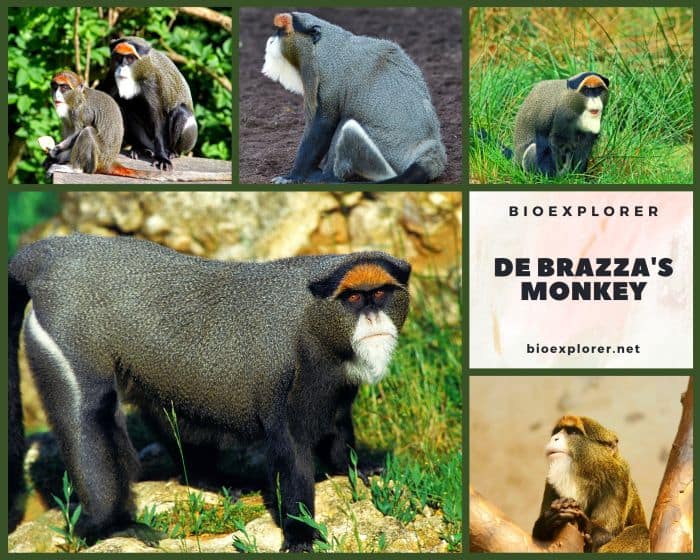
| Animalia | Primates | Cercopithecidae | Cercopithecus | Cercopithecus neglectus |
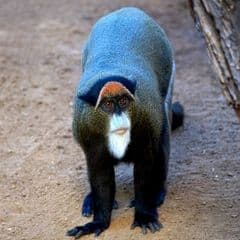

- Common Name: De Brazza’s Monkey
- Taxonomy Classification Year: 1876
- Monkey Size: 40 to 63.5 cm (15.75 to 25.00 in)
- Skin Color(s): Gray
- Habitat: Forest, rainforest
- Diet: Omnivorous
- Native Countries: Ethiopia, Cameroon, Angola
De Brazza’s Monkey Distribution
De Brazza’s Monkey Characteristics
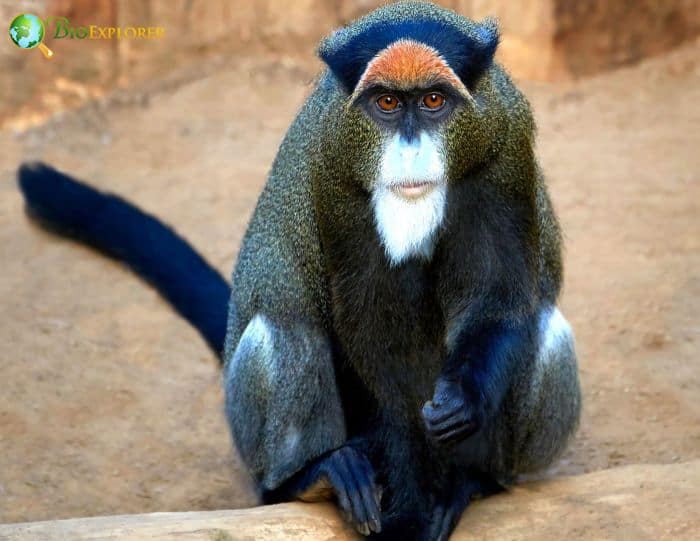
De Brazza’s monkey[1] is an Old-World primate native to central Africa’s swamp and riverine forests.
- This species exhibits marked sexual dimorphism in size.
- Male De Brazza’s monkeys weigh about 15.4 lbs, three more than the average female, which weighs 9 lbs. Males and females are gray with black limbs and tails.
- The head is round, with a long white beard, an orange crown, and a white muzzle. The rumps and thighs have white stripes.
- The legs are long, and the tail is not prehensile. Male De Brazza’s monkeys have a distinctive blue scrotum.
- In addition, both females and males have well-developed cheek pouches and the strongest legs of any guenon.
What Do De Brazza’s Monkeys Eat?
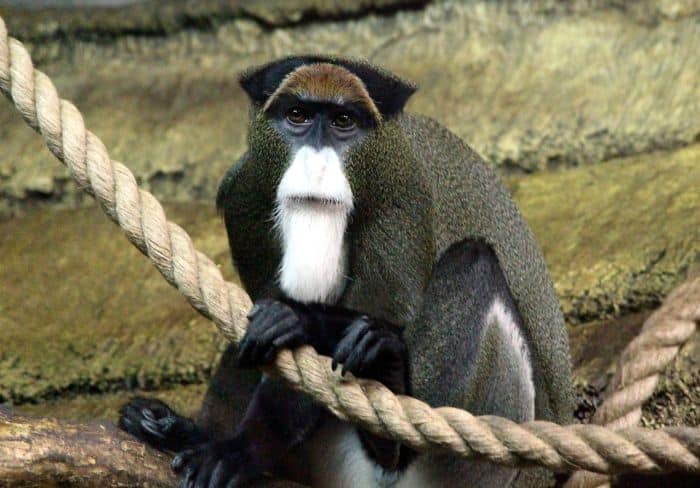
According to the African Journal of ecology, the De Brazza’s monkeys consume Dialium dinklagei, Fig (Ficus), Hypselodelphis violacea, and Macaranga in the wild[¶].
De Brazza’s Monkey Facts
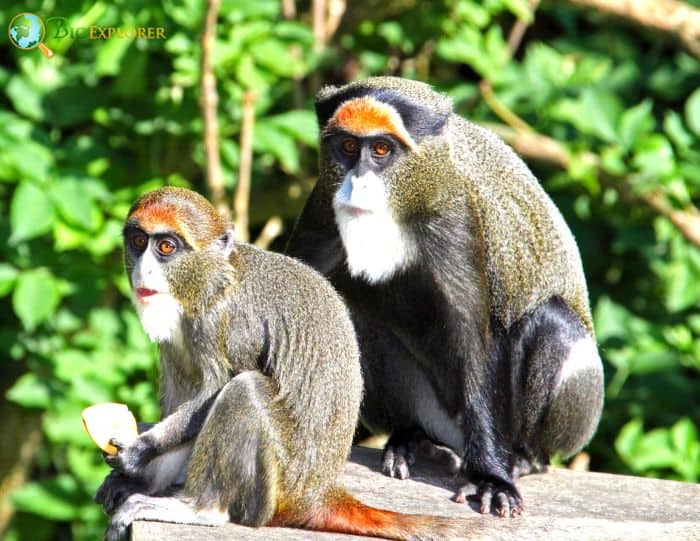
- It is the largest species of the guenon family and one of the most widespread African arboreal primates.
- In addition to its size, its white beard and orange diadem distinguish it from other Cercopithecus monkeys.
- Young male species spend most of their time exercising dominance, strutting about with cocked tails and patting tree branches, apparently mimicking their father.
- Unlike other guenon species, De Brazza’s monkeys rarely associate with other monkeys. In captivity, however, they roam freely.
- As an expression of tension or as another display of threat, adult males yawn to show their canine teeth.
Suggested Reading: Types of Monkeys
Cite This Page
APA7MLA8Chicago
BioExplorer.net. (2025, December 14). De Brazza’s Monkey. Bio Explorer. https://www.bioexplorer.net/animals/mammals/monkeys/de-brazzas-monkey/.
BioExplorer.net. "De Brazza’s Monkey" Bio Explorer, 14 December 2025, https://www.bioexplorer.net/animals/mammals/monkeys/de-brazzas-monkey/.
BioExplorer.net. "De Brazza’s Monkey" Bio Explorer, December 14 2025. https://www.bioexplorer.net/animals/mammals/monkeys/de-brazzas-monkey/.











